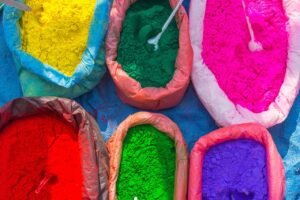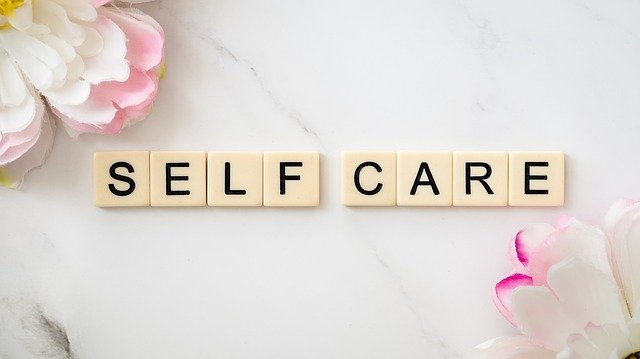
When it is the time of colourful
Phalgun, see the glory of Holi.
When it is the time to swing under the trees, see the glory of Holi.
Since time immemorial, festivals and celebrations. The most important characteristic
of our culture is that all the festivals celebrated here aim at instilling human values in the society and inculcate the values of love, unity and good will in people.
In India, the festivals and celebrations are related not just to any particular caste, religion, language or region but aim at nondiscrimination.
This is the reason that all the festivals and celebrations in India are celebrated with respect and togetherness by all Indians irrespective of the religions followed by them.
Holi is one of the most important festivals of Hindu society which is most awaited by people.
Holi is a significant Hindu festival celebrated in the spring season.
This festival according to the Hindu calendar is celebrated on the full moon night in the month of Phalgun.
Holi is one of the traditional festivals celebrated since time immemorial in India.
Which is celebrated by different names, like Holi, Holika, or Holaka.
Because it is celebrated in the spring season, it is called Vasantosav and Kalmahotsav also.
In India, different regions have different beliefs related to Holi.
And this unity is diversity is also one of the typical characteristics of Hindu culture.
In North-Eastern India, Holika Dahan is symbolically connected to Lord Krishna killing Putna,
the demoness and celebrated as Putna Dahan.
Whereas in South India, it is believed that on this very day, Lord Shiva had opened his third eye and had burnt Kamdev. And had smeared the ashes all over his body and danced.
But thereafter, seeing Kamdev’s wife Rati in deep sorrow Lord Shiva out of compassion rebirthed Kamdev.
This action of Lord Shiva made all the Gods happy and they showered colours over everyone.
Therefore, in South India the evening before Holi a big fire is alighted and in that fire
sugarcane, the flowers of mangoes, and sandalwood are offered.
Here, sugarcane signifies Kamdev’s bow, the flowers of mango signify Kamdev’s arrows and the burning fire signifies burning of Kamdev by Lord Shiva and the offering of sandalwood signifies soothing the burning sensations Kamdev had due to burning in fire.
A lot of stories are related with the festival of Holi.
Out of these stories, the most famous is the story of Prahlad.
It is said that many centuries ago there was a very strong demon king by the name of Hiranyakashipu.
His strength made him so self-conceited that he started considering himself as God.
He had put restrictions in his kingdom on taking God’s name. Hiranyakashipu’s son, Prahlad was
was an avid worshipper of God. Seeing Prahlad worship God made Hiranyakashipu very angry
and he tortured his own son a lot. But Prahlad did not leave the path of worshipping God.
Hiranyakashipu’s sister, Holika had been given a boon that she would not get burnt in fire.
Hiranyakashipu ordered his sister, Holika that she sit in fire with Prahlad in her lap.
On sitting in fire, Holika was burnt to death but Prahlad was saved.
So in remembrance of God-worshipper Prahlad this day is celebrated by lighting up a fire.
As significance, It is also believed that the word Prahlad means happiness.
Animosity and torture are signified by Holika who is burnt to death and love and happiness are signified by Prahlad remains immortal.
Aside from Prahlad’s story, this festival also signifies demoness Dhundi, joyful dance of Radha-Krishna
and rebirth of Kamdev. Some people believe that when people play Holi applying colour to each other along with dancing and singing, they take the appearance of Lord Shiva’s followers and his marriage procession.
Some people also believe that Lord Krishna had killed a demoness Putna on this day and to celebrate this happiness, the Gopis and Gwalas arranged the joyful dance celebration and played with each other using colours.
Just like the festival of Holi its traditions too are age old and its organization and aims have been changing with time.
Many centuries ago, this festival was celebrated by married women for happiness and prosperity of family.
There was a tradition of worshipping the full moon.
In Vedic period, this festival was called Navtrayayestha Yagna.
At that time, the new yet-to-ripe crop was offered to the Gods and also given away as yagna
offerings to people was followed as a tradition in the society.
Food is also called Hola. Therefore, this festival is also called Holokoutsav.
The festival of Holi begins from the day of Vasantpanchami.
On that day, for the first time, Gulal, dry colour is sprinkled.
Everywhere there is a riot of colours sprinkled and squirted upon.
On the eve of Holi, it is an important tradition to eat flowers of mangoes and sandalwood mixed together.
In India, when celebrating Holi, the day next to Holi is called Dhulivandan.
On this day, people play with colours.
Since morning, people set out to meet their relatives and friends.
Gulal and other colours are used to welcome guests.
People forget their jealousy and envy and hug each other with love and apply colours to each other.
On this day, people move around in groups wearing colourful clothes and dancing and singing in joy.
Children play with water guns filled with colourful water and enjoy the festival of colours, Holi.
The whole society is united in being colourful with the colours of Holi.
After playing with colours, people bathe in the late afternoon and in the evening wear new clothes
and meet with friends and relatives and arrange dinner and dance and song programmes.
On Holi day, at home various food delicacies are prepared.
On this occasion, many types of sweets are prepared.
Among these, Gujhia is the most preferred Besan Sev and Dahivada too are very important.
In general, in maximum of families in Uttar Pradesh, these three are prepared and served to guests.
Kanji, Bhang and Thandai are the special drinks prepared during this festival.
But these are liked by very few people.
In India, the festival of Holi is celebrated in different states in different ways.
The Holi of Brij is still an attraction point for many.
The Laathmaar Holi of Barsana too likewise is very famous.
In this, men spray colour on women and women beat them with sticks and hunters made of clothes.
Lakhs of people from across the world come to Barsana to join in the celebration of Holi.
The ambience at Barsana during Holi is wonderful and amazing.
A few days before Holi the Laathmaar Holi is played.
It is said that Lord Krishna and his friends used to tease Radha and her friends a lot and therefore they were beaten a lot.
During this time, on the beats of drums, women beat men with sticks.
Thousands of people throw colour on them at this time.
The fun and joy of Laathmaar Holi can be experienced in Barsana.
In the same way, in Mathura and Vrindavan the festival of Holi is celebrated for 15 days.
In Kumaon, a prose and poetry get together takes place where classical music is discussed.
All this begins a few days before Holi.
In Haryana, Dhurandi is celebrated where sister-in-law teases her brother-in-law as an age-old tradition.
In Bengal, doljatra is celebrated as Chaitaniya Mahaprabhu’s birthday.
Processions are carried out and people sing and dance along with them.
Besides these, in Maharashtra, Rangpanchami is played with dry gulal.
In Goa after processions during Shigmo cultural programmes are organized.
In Punjab in Hola Mohalla, sikh people display their strength and vigour.
In South Gujarat, for tribal people Holi is their most important festival.
In Chattisgarh, in Hori they have wonderful folk songs and folk dances
traditionally followed even today.
In Madhya Pradesh, among the tribal people in Malwa area they celebrate with
great pomp and show
the festival of Bhagoriya, which is similar to Holi.
In the same way, Hindus who reside in different countries around the world
and Hindu religious bodies like Iskon and the Bankebihari Temple in Vrindavan
follow different traditions of decorations and celebrations of Holi,
which surprisingly have some similarities as well as some differences also.
In celebrating Holi, there are a lot of different beliefs, traditions and different historical events attached to it.
By any means, the main aim of this festival is to human wellbeing.
Holi is considered a symbol of unity and goodwill.
Holi motivates us to forget all misunderstandings and unite in goodwill and hug each other.
Besides this, Holi being a festival of colours it motivates us to be happy always.
Therefore, on the occasion of this holy festival we should stay away from jealousy, envy, quarrels and other negative emotions and stop them from spreading.

